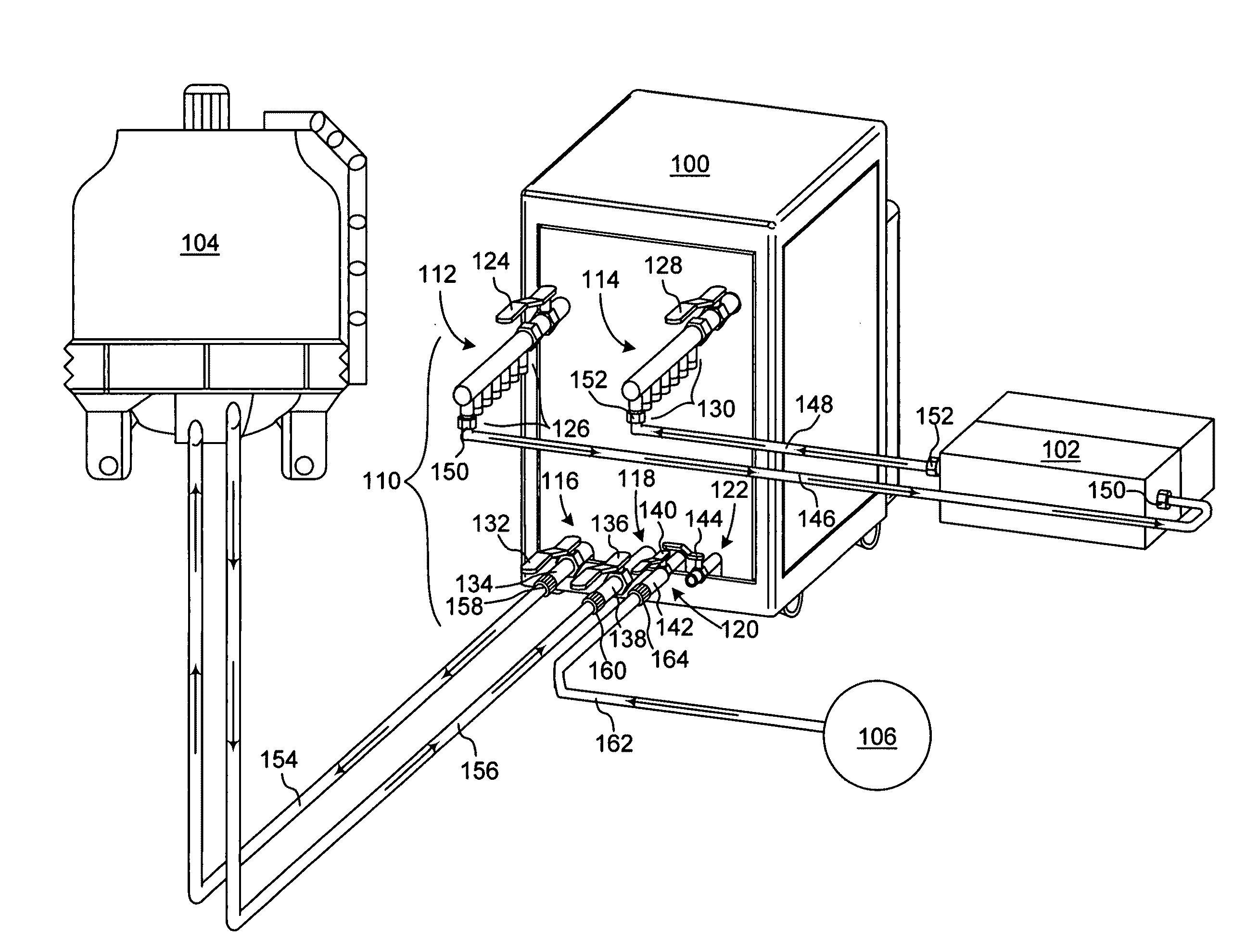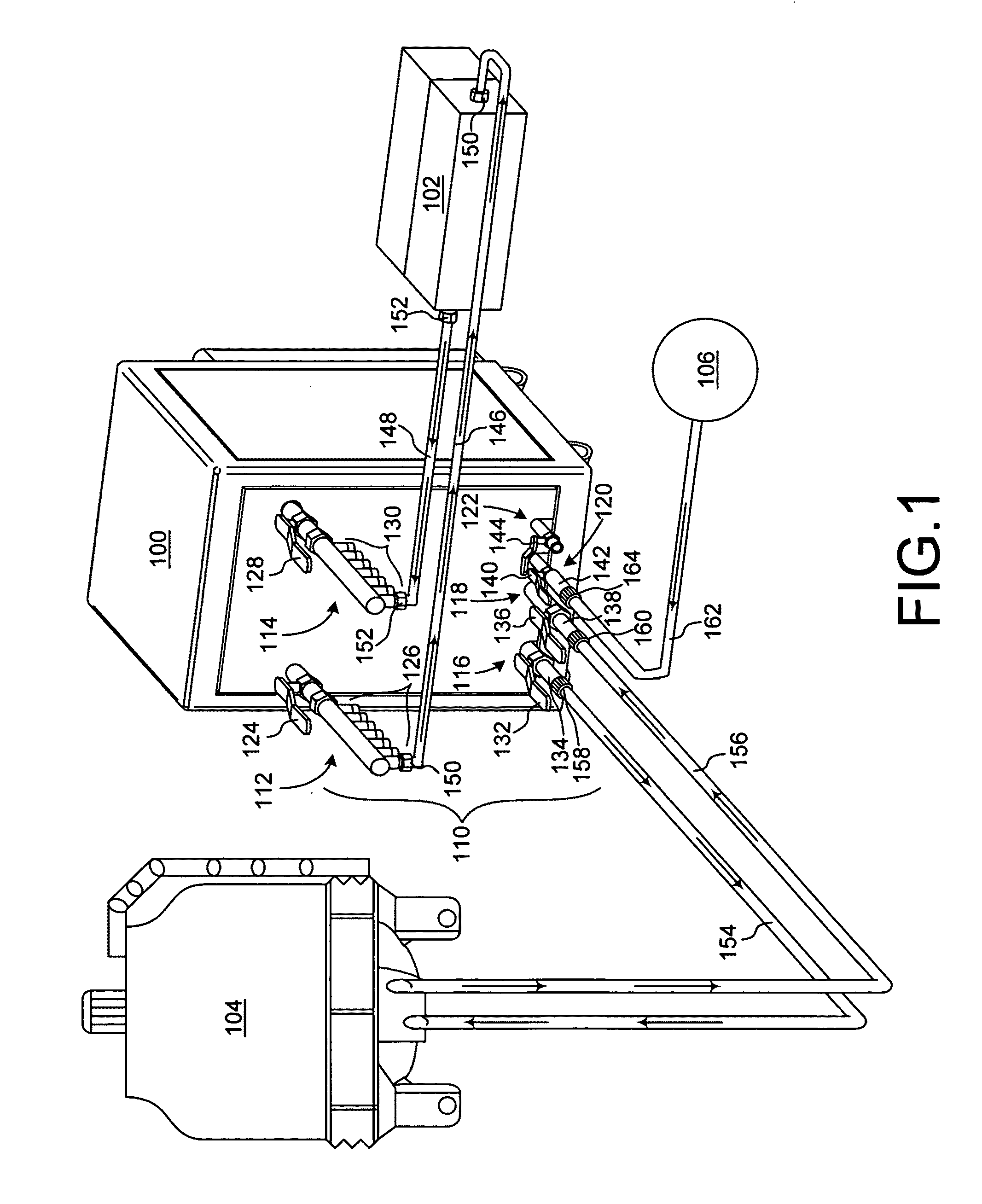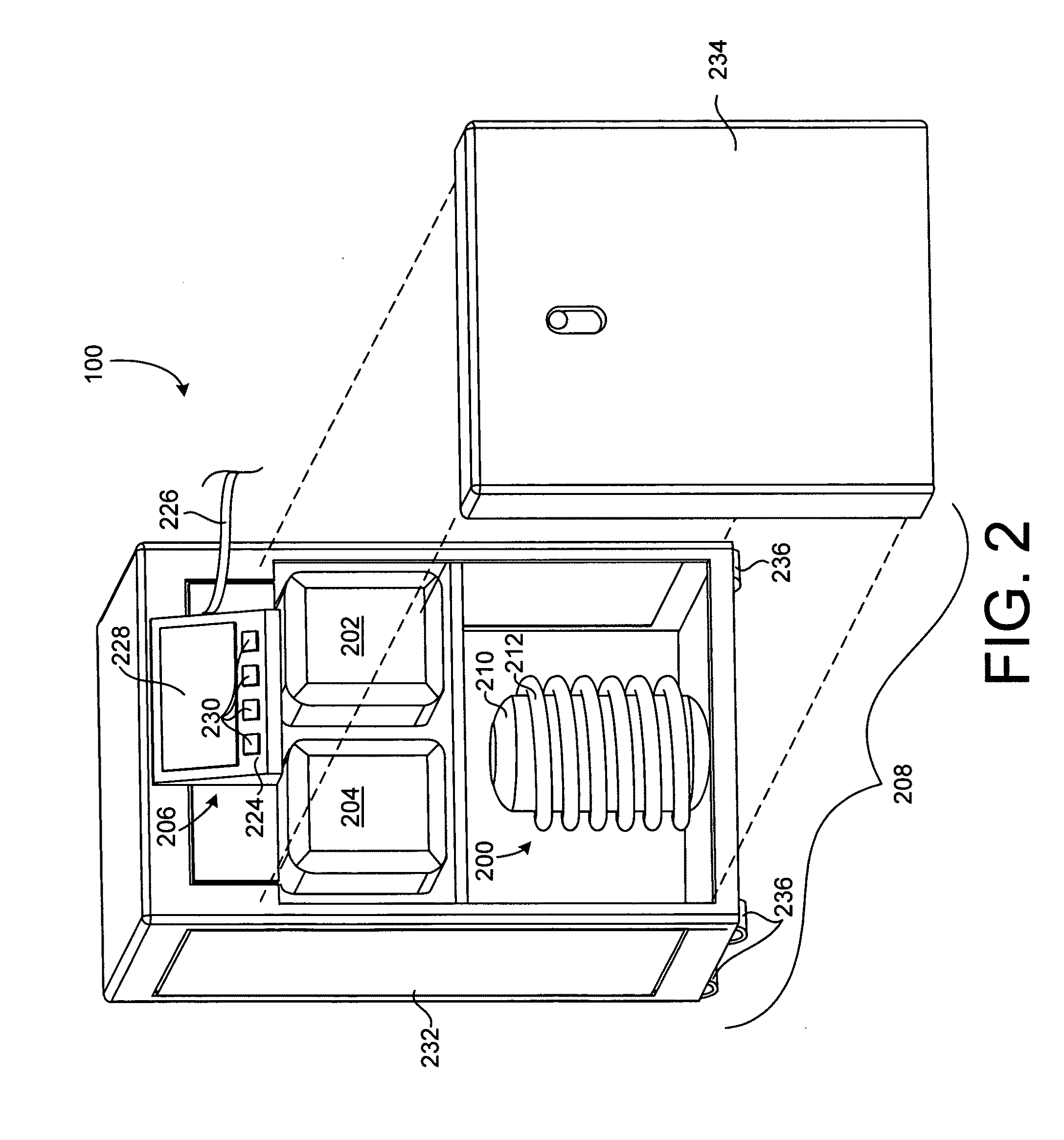System and method for rapidly heating and cooling a mold
a rapid heating and cooling and mold technology, applied in the direction of auxillary shaping apparatus, manufacturing tools, ceramic shaping apparatus, etc., can solve the problems of limiting the use of constant-temperature injection molding, affecting the final product quality, etc., to achieve facilitate the controlled rapid heating and cooling of the mold
- Summary
- Abstract
- Description
- Claims
- Application Information
AI Technical Summary
Benefits of technology
Problems solved by technology
Method used
Image
Examples
Embodiment Construction
[0037]The present invention overcomes the problems associated with the prior art, by providing a portable mold-temperature control unit that can operate with or without being connected a remote fluid source. In the following description, numerous specific details are set forth (e.g., remote cooling tower, fluid valves, fluid-lines, fluid-line connectors, etc.) in order to provide a thorough understanding of the invention. Those skilled in the art will recognize, however, that the invention may be practiced apart from these specific details. In other instances, details of well known molding practices (e.g., heating / injection / packing, part ejection, plastic type, etc.) and components have been omitted, so as not to unnecessarily obscure the present invention. It should be noted that the term “fluid” is used herein to broadly describe both liquids and / or gasses.
[0038]FIG. 1 shows a perspective view of a portable mold-temperature control unit 100 coupled to a mold 102, a remote fluid so...
PUM
| Property | Measurement | Unit |
|---|---|---|
| Temperature | aaaaa | aaaaa |
| Pressure | aaaaa | aaaaa |
Abstract
Description
Claims
Application Information
 Login to View More
Login to View More - R&D
- Intellectual Property
- Life Sciences
- Materials
- Tech Scout
- Unparalleled Data Quality
- Higher Quality Content
- 60% Fewer Hallucinations
Browse by: Latest US Patents, China's latest patents, Technical Efficacy Thesaurus, Application Domain, Technology Topic, Popular Technical Reports.
© 2025 PatSnap. All rights reserved.Legal|Privacy policy|Modern Slavery Act Transparency Statement|Sitemap|About US| Contact US: help@patsnap.com



